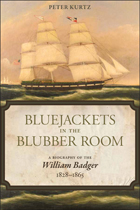

During the closing years of the sixteenth century, the Dutch East India Company fast became a political and economic force in Asia, en route to becoming the leading private company in the world by 1660. This definitive volume explores perhaps the most important tool in the company’s trade: its ships. Robert Parthesius here reconstructs the complete shipping activities of the Company through a unique database that charts the movements of even previously ignored smaller vessels. Demonstrating that the wide range of types and sizes of vessels were indeed what gave the Company the ability to sail—and to continue its profitable trade—year after year, Dutch Ships in Tropical Waters combines the best of maritime history and archaeological research in order to change our understanding of the logistical dynamics behind one of the most important and successful businesses of this period.
READERS
Browse our collection.
PUBLISHERS
See BiblioVault's publisher services.
STUDENT SERVICES
Files for college accessibility offices.
UChicago Accessibility Resources
home | accessibility | search | about | contact us
BiblioVault ® 2001 - 2025
The University of Chicago Press









